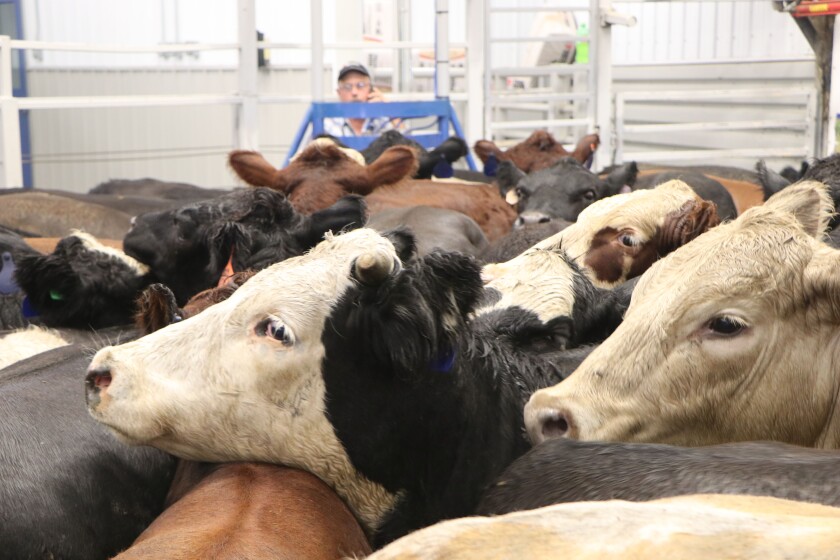Unlocking Growth Potential: Bagley Risk Management Approaches
Unlocking Growth Potential: Bagley Risk Management Approaches
Blog Article
Comprehending Livestock Danger Defense (LRP) Insurance Coverage: A Comprehensive Overview
Navigating the realm of livestock danger defense (LRP) insurance can be a complex undertaking for lots of in the farming market. From how LRP insurance coverage works to the numerous coverage choices readily available, there is much to reveal in this comprehensive guide that can potentially shape the means animals producers come close to risk administration in their businesses.

Just How LRP Insurance Works
Sometimes, comprehending the technicians of Animals Danger Defense (LRP) insurance policy can be complicated, yet damaging down how it functions can give quality for breeders and farmers. LRP insurance coverage is a threat monitoring device created to shield livestock producers against unexpected cost declines. The plan permits producers to set an insurance coverage degree based upon their certain demands, selecting the variety of head, weight array, and insurance coverage rate. When the plan is in area, if market value drop listed below the coverage rate, manufacturers can submit a case for the distinction. It is very important to note that LRP insurance is not a revenue guarantee; instead, it concentrates solely on rate risk protection. The protection duration usually varies from 13 to 52 weeks, supplying flexibility for manufacturers to select a duration that aligns with their manufacturing cycle. By making use of LRP insurance, farmers and ranchers can alleviate the financial risks connected with fluctuating market value, ensuring higher security in their operations.
Qualification and Insurance Coverage Options

When it comes to coverage choices, LRP insurance coverage provides manufacturers the adaptability to select the coverage level, insurance coverage period, and endorsements that best suit their threat management requirements. Coverage levels usually range from 70% to 100% of the anticipated ending worth of the insured animals. Producers can additionally choose protection periods that line up with their production cycle, whether they are insuring feeder livestock, fed cattle, swine, or lamb. Recommendations such as cost danger security can further personalize protection to protect versus adverse market variations. By comprehending the eligibility criteria and insurance coverage options readily available, animals producers can make educated choices to manage risk efficiently.
Advantages And Disadvantages of LRP Insurance Coverage
When assessing Livestock Threat Protection (LRP) insurance, it is vital for livestock manufacturers to weigh the benefits and negative aspects fundamental in this risk administration tool.

One of the key benefits of LRP insurance policy is its capability to give defense against a decline in animals costs. Furthermore, LRP insurance offers a degree of versatility, enabling manufacturers to customize coverage degrees and resource policy durations to match their specific requirements.
However, there are likewise some downsides to think about. One constraint of LRP insurance policy is that it does not protect versus all sorts of dangers, such as illness episodes or natural disasters. Premiums can sometimes be costly, especially for producers with big livestock herds. It is important for manufacturers to meticulously examine their private danger exposure and monetary circumstance to figure out if LRP insurance policy is the best threat administration tool for their operation.
Recognizing LRP Insurance Policy Premiums
Tips for Maximizing LRP Perks
Making the most of the advantages of Livestock Threat Protection (LRP) insurance policy needs tactical planning and proactive risk management - Bagley Risk Management. To make the many of your LRP coverage, consider the adhering to ideas:
Routinely Analyze Market Conditions: Keep notified concerning market trends and price changes in the livestock sector. By monitoring these variables, you can make enlightened decisions concerning when to purchase LRP coverage to shield against possible losses.
Set Realistic Protection Levels: When picking protection levels, consider your production expenses, market value of animals, and prospective risks - Bagley Risk Management. Establishing realistic protection degrees guarantees that you are adequately secured without overpaying for unnecessary insurance
Expand Your Insurance Coverage: Rather of relying entirely on LRP insurance policy, consider expanding your danger management methods. Combining LRP with various other danger management devices such as futures contracts or choices can offer extensive protection versus market uncertainties.
Evaluation and Readjust Insurance Coverage Routinely: As market problems transform, regularly evaluate your LRP insurance coverage to ensure it lines up with your existing risk direct exposure. Adjusting protection degrees and timing of purchases can aid enhance your risk protection method. By adhering to these ideas, you can optimize the advantages of LRP insurance and secure your livestock procedure against unexpected risks.
Verdict
Finally, livestock click to read risk security (LRP) insurance is a valuable device for farmers to handle the financial risks connected with their animals operations. By recognizing just how LRP works, eligibility and coverage choices, along with the advantages and disadvantages of this insurance policy, farmers can make enlightened choices to secure their livelihoods. By thoroughly taking into consideration LRP premiums and implementing techniques to take full advantage of advantages, farmers can alleviate prospective losses and ensure the sustainability of their operations.
Animals producers interested in acquiring Animals Threat Protection (LRP) insurance coverage can discover an array of qualification criteria and Related Site protection choices customized to their specific livestock operations.When it comes to insurance coverage options, LRP insurance coverage supplies producers the adaptability to choose the insurance coverage level, insurance coverage period, and recommendations that finest fit their threat administration needs.To comprehend the intricacies of Animals Danger Protection (LRP) insurance policy totally, recognizing the factors affecting LRP insurance coverage costs is important. LRP insurance costs are established by numerous components, including the protection level chosen, the expected cost of animals at the end of the protection period, the type of livestock being guaranteed, and the size of the coverage duration.Evaluation and Readjust Insurance Coverage Routinely: As market problems transform, occasionally assess your LRP coverage to ensure it lines up with your existing risk direct exposure.
Report this page